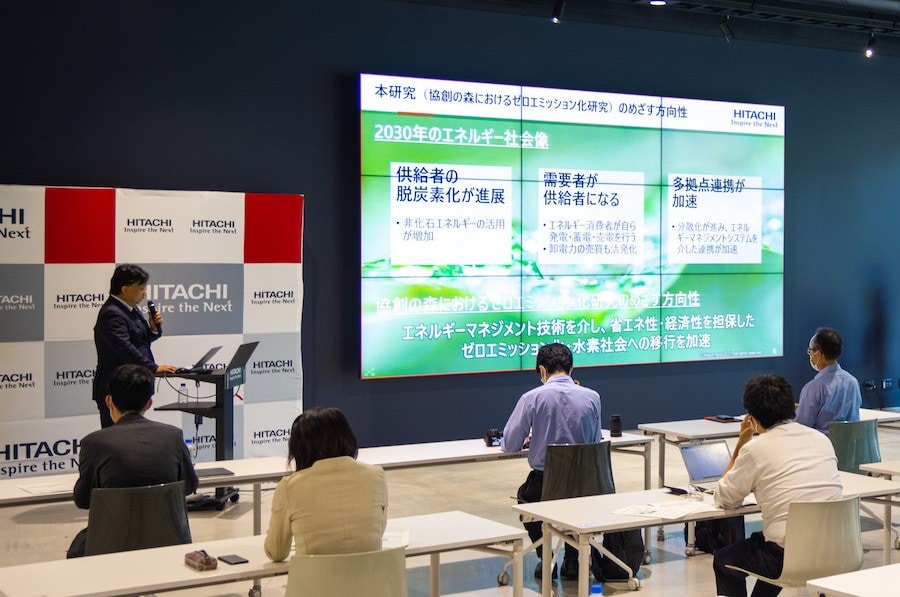
Press conference held on October 8, 2021 (photo: Takuma Imamura)
Hitachi, Ltd. held a press conference at the "Kyōsō-no-Mori" research and development hub located in Kokubunji City, Tokyo, to announce that it has built an energy management system and a demonstration environment using technologies for power generation, storage, and other technologies.
This system enables the use of efficient energy to cut CO2 emissions while keeping costs down. Hitachi believes that providing such an environment to companies aiming to decarbonize will contribute to achieving zero CO2 emissions and a sustainable society.
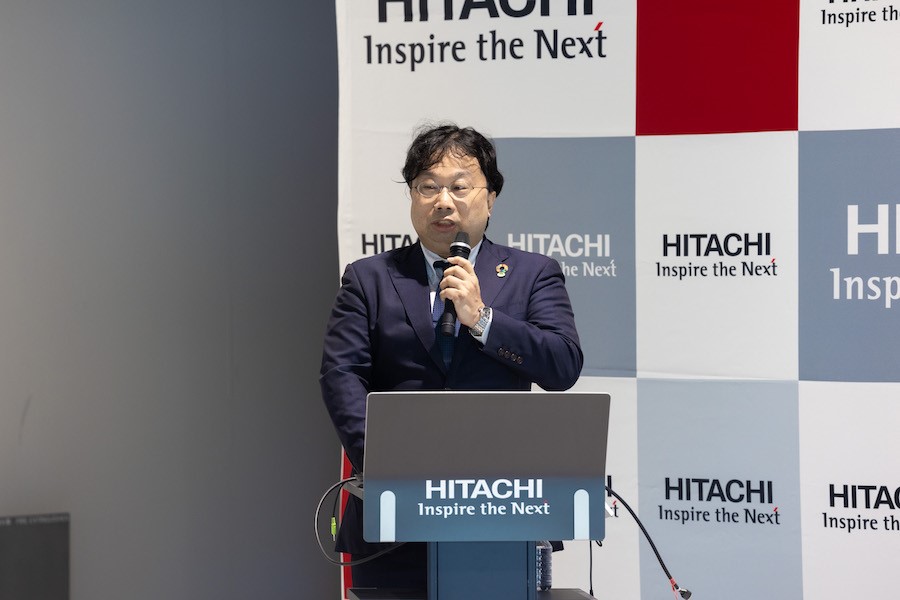
Distinguished Researcher Akio Shima (photo: Takuma Imamura)
The energy management system developed by Hitachi connects solar power generation, storage batteries, gas cogeneration1, EV2 fast chargers, and other equipment to a “direct-current distribution grid3” that transmits electricity as direct current without having to convert it to alternating current and that is used in conjunction with operation and control technologies such as power supply-demand control and trading systems.
At the press conference, Distinguished Researcher Akio Shima spoke of his enthusiasm for the system.
“We believe that we have created a system that achieves both energy conservation and economic efficiency and that encourages the transition to zero emissions and a hydrogen society. This system can achieve a range of objectives from power procurement through to supply-demand control and power trading control, so it is extremely flexible. Moving forward, we would like to collaborate with many companies so as to disseminate this system.”
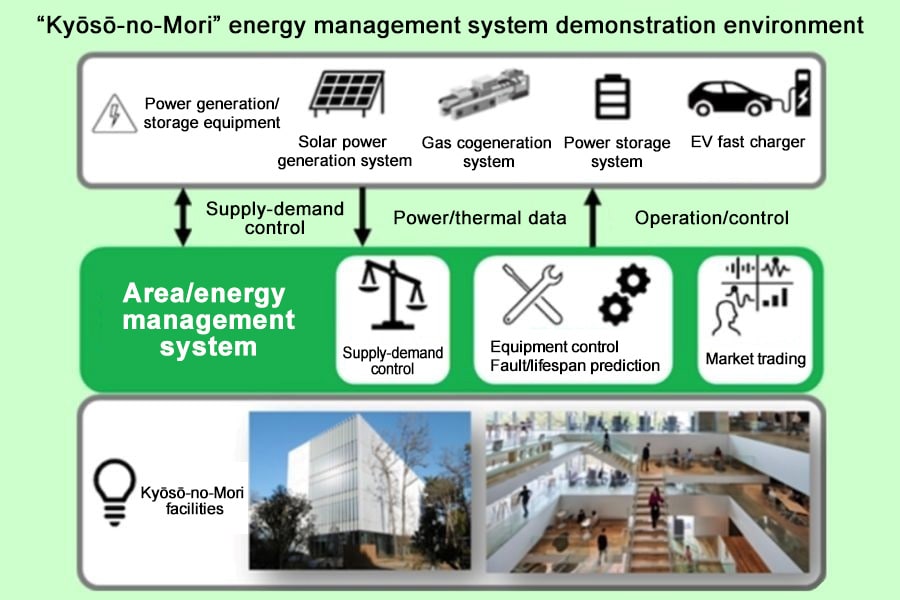
The demonstration environment of the energy management system built at Kyōsō-no-Mori
Shima outlined three features of the system:
Hitachi has been operating this system since FY2020, and compared to FY2018, CO2 emissions have decreased by 20% and the cost of energy at Hitachi's Kokubunji site "Kyōsō-no-Mori" was reduceded by 30%.
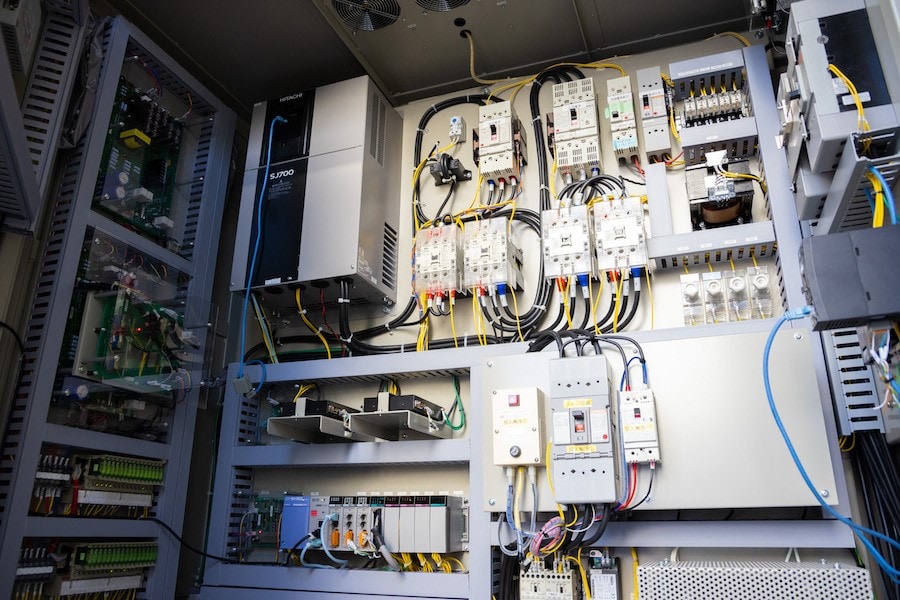
The power control panel installed at Kyōsō-no-Mori (photo: Takuma Imamura)
Shima, who used to be a semiconductor researcher, and his team started working on the concept of a new energy management system in 2016. It started after the following conversation: "We’ll have to start thinking about the burden on the environment." However, he says that the term "zero emissions" was not well-known in the company at that time.
Against this backdrop, the "Kyōsō-no-Mori" research and development hub was opened in 2019, and Shima and his team began working on the concept. However, Shima recalls the situation at the time: "There were difficulties with realizing the concept."
He continues: "I knew that Hitachi excels at storage battery and solar power generation control technologies, as well as direct-current distribution grid technology, but I struggled to design an entire system that combines those technologies."
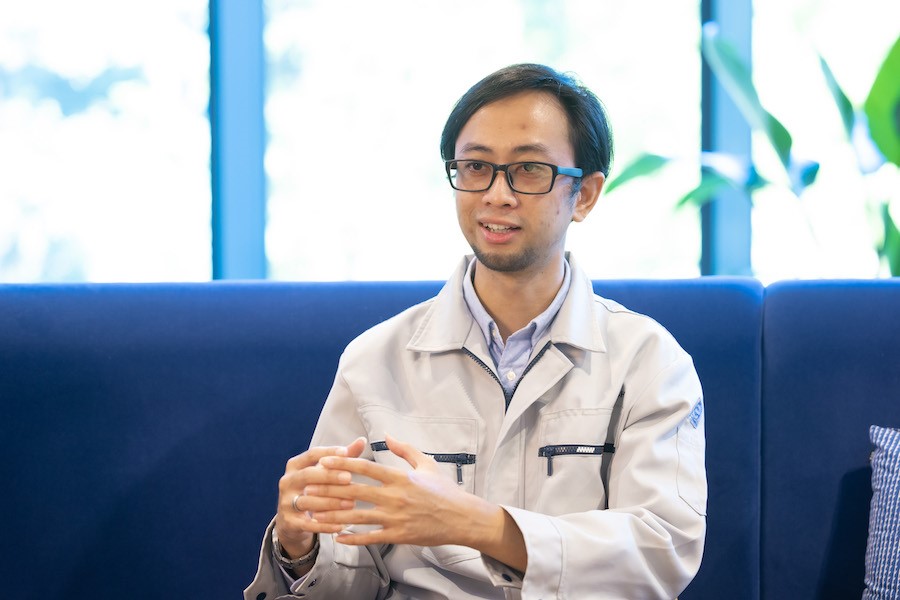
Emha Bayu Miftahullatif (photo: Takuma Imamura)
Researchers of the technologies used in the system played a critical role in bringing this system to fruition. One of those researchers is Emha Bayu Miftahullatif from Indonesia. He graduated from a technical college in Tokushima Prefecture before studying at the University of Tsukuba. He joined Hitachi in 2018 and is in charge of storage battery research.
Emha says: "I used to do research into raw materials, so for me storage batteries are a new field of research. As storage batteries are essential for bringing an energy management system to fruition, I felt a lot of pressure, and I was very busy, but I did my best knowing that the work was worthwhile."
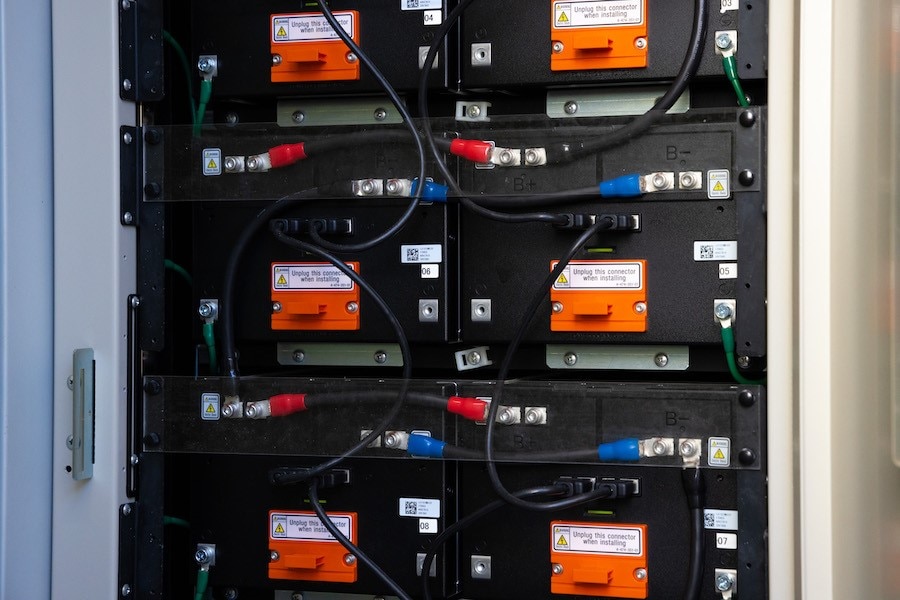
Rack for the storage batteries used at Kyōsō-no-Mori (photo: Takuma Imamura)
Shima is thinking about further developing this energy management system. He wants to reduce the amount of renewable energy that is wasted by incorporating 5G technology, which enables high-speed communication, and technology that allows multiple locations to share energy.
"It’s not uncommon for facilities that say they are using 100% renewable energy to purchase more renewable energy than they use and then waste it. Using 5G enables the actual amount of energy required to be ascertained instantly, which eliminates any waste of renewable energy and allows energy to be saved."
Furthermore, instantaneously sending data on the power used at each facility enables the amount of energy required in a certain area to be grasped in real time. This is not possible with conventional energy data technology, for which it is difficult to send a large amount of data instantaneously.
Shima says: "If energy data can be obtained from a large number of points in a short period of time, this will significantly contribute to energy conservation. Moving forward, I want to find out the needs of many companies so as to improve the system."